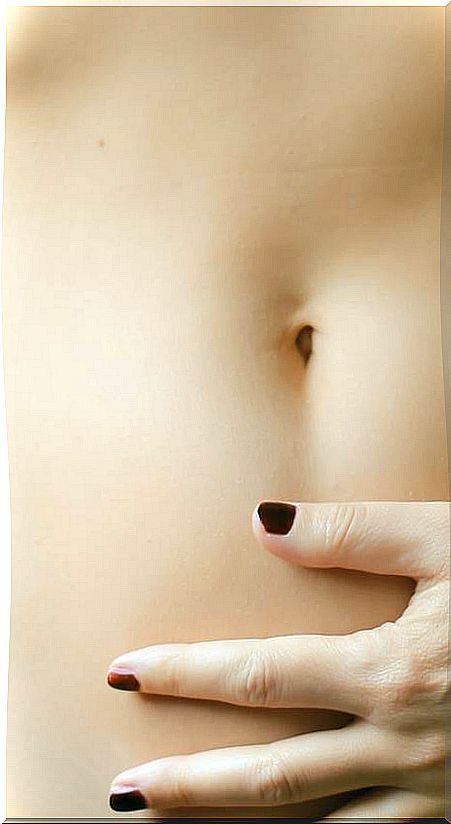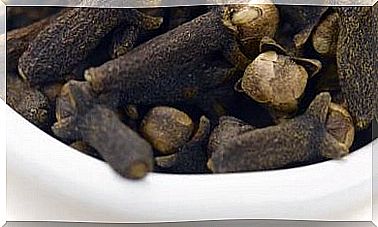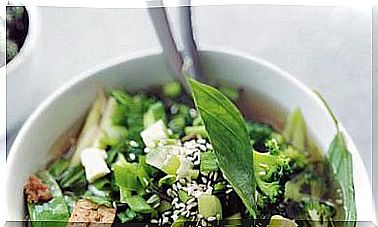How To Improve The Condition Of The Pelvic Floor Through Diet
The pelvic floor can suffer the consequences of intestinal inflammation. If we want to enjoy a fit pelvic floor, we first need to eliminate intestinal inflammation with a proper diet.

- Inflammation of the intestine and pelvic floor
- Symptoms of excess pressure on the pelvic floor
- Inflammation of the intestine and a swollen abdomen
- Anti-inflammatory diet
The pelvic floor and the digestive system are a very unknown dance pair, but they are intimately related by hormonal pathways, by purely mechanical relationships and by proximity.
Often people who think they have a problem with the pelvic floor need nutritional changes to reduce inflammation and improve digestive transit. If the digestive system has problems, the pelvic floor will have them too, sooner or later.
As we have already discussed in this other article, the pelvic floor is the lower part of a large globe, the abdominal-pelvic sphere. The interior of this sphere is full, there are no empty spaces.
Within the sphere, are all the digestive organs: liver, stomach, 6 meters of small intestine and 1.5 meters of large intestine.
Just below them, we enter pelvic territory. The uterus, ovaries and bladder live there. The pelvic floor supports all this weight, with the help of the abdominal girdle (transverse abdomen) and the entire support system of the body, tightened by a correct posture.
Inflammation of the intestine and pelvic floor
One of the most frequent situations in the day to day is seeing people with chronic intestinal inflammation. Many go to the doctor and the tests go well, but the discomfort continues. They have a swollen belly, the digestions are heavy, they need a recovery time after meals, they retain fluid, they have difficulty on their stomach or they have diarrhea, and if they tighten their tummy it hurts.
Inflammation is the response of a tissue to some type of aggression. An inflamed intestine, regardless of the symptoms it gives, is not a good thing, it means that something is happening to our digestive system.
Considering that the body is built and repaired with what the digestive system absorbs, we want it to work well. An inflamed intestine has less capacity to absorb nutrients, undoubtedly.
Beyond the global impact it has on the quality of the bricks with which the body is built, intestinal inflammation is a direct problem for the pelvic floor.
An inflamed structure takes up more space. When a bug bites us, the area becomes inflamed: it becomes red, hot and above all, more voluminous. This same reaction is experienced by any tissue in the body when it becomes inflamed.
Imagine 6 meters of intestines, inflamed. At the volume level, the increase is considerable. This intestine, which now takes up much more space, is inside the sphere, but the sphere was already full from the beginning, therefore there is now much more pressure than before. This increased pressure is directly received by the pelvic floor and all pelvic structures.
Symptoms of excess pressure on the pelvic floor
Continued excess pressure is related to:
- Prolapse (fall of the pelvic organ: uterus, bladder, rectum …).
- Vulvar inflammation: the difficulty of blood return does not allow the correct cleaning of the tissues, which become inflamed as a defense.
- Urine infection symptoms (without bacteria).
- Pelvic floor weakness.
- Urinary incontinence
The list is longer. Excess pressure is one of the main enemies of the pelvic floor and intestinal inflammation is a direct cause of increased pressure.
Inflammation of the intestine and a swollen abdomen
Many prominent bellies are children of intestinal inflammation. In the human body there are hierarchies. The organs and, above all, the viscera, rule over the muscles; that is, the muscles are at the service of the organs. If a viscus becomes inflamed it takes up more space and the body has to relax the abdominal muscles. The viscera do not like to be squeezed, and if they are inflamed, less. The muscles “move away” to make room for their viscera.
That is why intestinal inflammation, although not symptomatic, generates prominent bellies, even in thin bodies. Simply, the abdominal muscles relax, distend to give space and the intestines fall forward, generating bellies.
Beyond an aesthetic issue, the relaxation of the abdominal girdle increases the pressure on the pelvic floor, which suffers the consequences. Therefore, pelvic floor rehabilitation while there is intestinal inflammation is not the best option, because we would activate a muscle that does not want to be activated out of “respect” for the intestines.
I am not a nutritionist, but there is currently a consensus on foods that cause intestinal inflammation. It is prudent and smart to stay away, as much as possible, from these types of ingredients:
- Sugar
- Refined flours and cereals with gluten
- Saturated fats
- Refined vegetable oils
- Refreshments
- Ultra-processed foods
- Pre-cooked food
- Sweets and pastries
- Red meats and sausages
- Cow’s milk, cheese and yogurt
- Pizzas, potato chips …
I’m sure I’m not discovering anything new for you. I only bring a new perspective to improve your diet, this time, from the pelvic floor.
Anti-inflammatory diet
In the following articles you will find information and practical tips to create anti-inflammatory menus that serve to prevent and treat intestinal inflammation:
- How to reduce inflammation of the body through diet
- 6 foods to integrate and 6 to avoid in your anti-inflammatory diet
- Anti-inflammatory menu: feel better in 7 days
- Anti-inflammatory menus: ideal breakfast, lunch and dinner
- 100% vegetable anti-inflammatory weekly menu (and 3 recipes)
- The 6 best anti-inflammatory foods to keep you healthy
- 5 foods to fight inflammation









